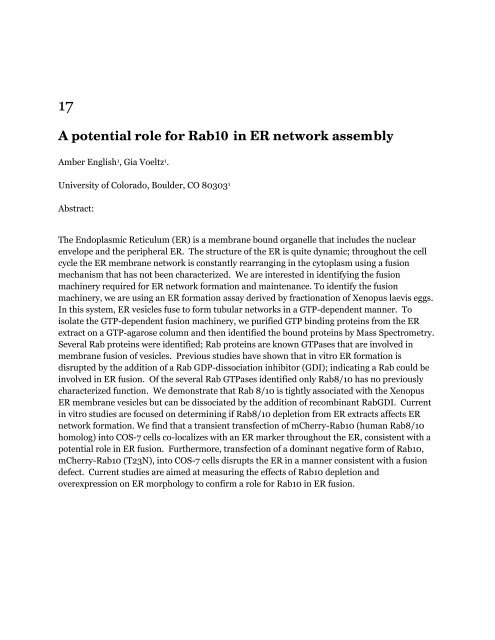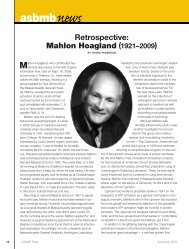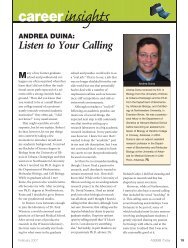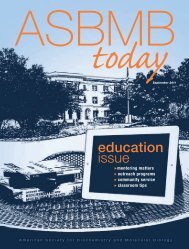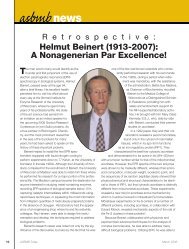View Program - asbmb
View Program - asbmb
View Program - asbmb
- TAGS
- program
- asbmb
- www.asbmb.org
Create successful ePaper yourself
Turn your PDF publications into a flip-book with our unique Google optimized e-Paper software.
17<br />
A potential role for Rab10 in ER network assembly<br />
Amber English 1 , Gia Voeltz 1 .<br />
University of Colorado, Boulder, CO 80303 1<br />
Abstract:<br />
The Endoplasmic Reticulum (ER) is a membrane bound organelle that includes the nuclear<br />
envelope and the peripheral ER. The structure of the ER is quite dynamic; throughout the cell<br />
cycle the ER membrane network is constantly rearranging in the cytoplasm using a fusion<br />
mechanism that has not been characterized. We are interested in identifying the fusion<br />
machinery required for ER network formation and maintenance. To identify the fusion<br />
machinery, we are using an ER formation assay derived by fractionation of Xenopus laevis eggs.<br />
In this system, ER vesicles fuse to form tubular networks in a GTP-dependent manner. To<br />
isolate the GTP-dependent fusion machinery, we purified GTP binding proteins from the ER<br />
extract on a GTP-agarose column and then identified the bound proteins by Mass Spectrometry.<br />
Several Rab proteins were identified; Rab proteins are known GTPases that are involved in<br />
membrane fusion of vesicles. Previous studies have shown that in vitro ER formation is<br />
disrupted by the addition of a Rab GDP-dissociation inhibitor (GDI); indicating a Rab could be<br />
involved in ER fusion. Of the several Rab GTPases identified only Rab8/10 has no previously<br />
characterized function. We demonstrate that Rab 8/10 is tightly associated with the Xenopus<br />
ER membrane vesicles but can be dissociated by the addition of recombinant RabGDI. Current<br />
in vitro studies are focused on determining if Rab8/10 depletion from ER extracts affects ER<br />
network formation. We find that a transient transfection of mCherry-Rab10 (human Rab8/10<br />
homolog) into COS-7 cells co-localizes with an ER marker throughout the ER, consistent with a<br />
potential role in ER fusion. Furthermore, transfection of a dominant negative form of Rab10,<br />
mCherry-Rab10 (T23N), into COS-7 cells disrupts the ER in a manner consistent with a fusion<br />
defect. Current studies are aimed at measuring the effects of Rab10 depletion and<br />
overexpression on ER morphology to confirm a role for Rab10 in ER fusion.


